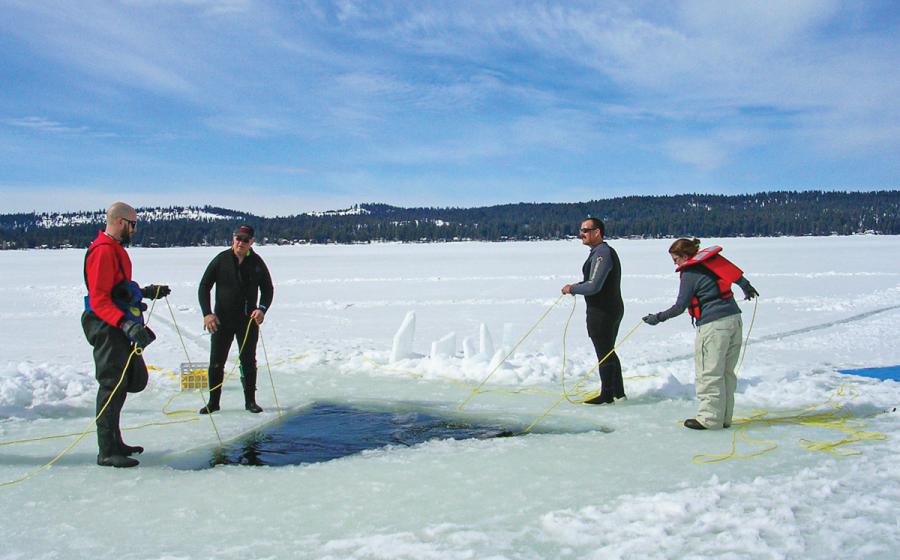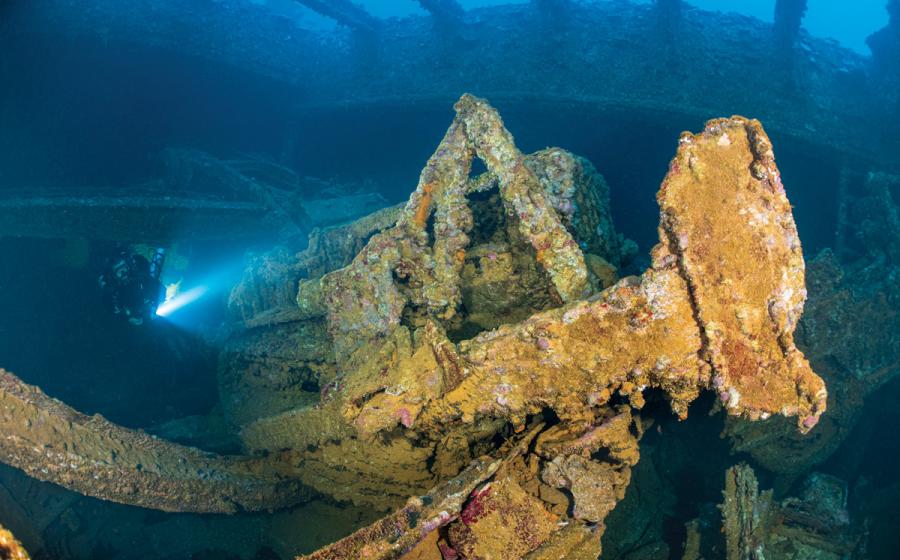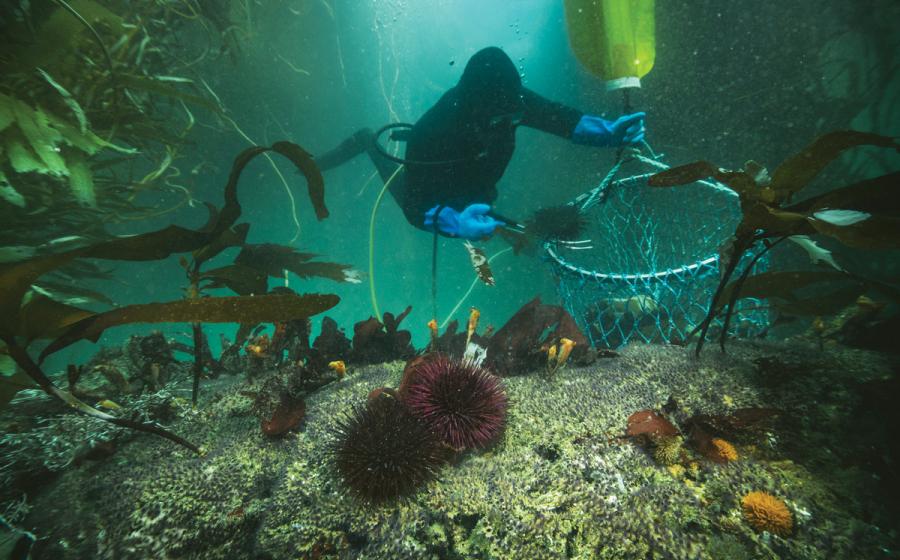Liveaboard Diving Off the Beaten Path in Indonesia
^^I^^ am below a bagan in the middle of the Celebes Sea with my dive buddies from Raja Ampat Aggressor, where four whale sharks have captivated us for more than an hour. Not in a menacing Hollywood way, but as if they were a troupe of ballerinas putting on a spellbinding performance for an audience.
With no other reference point than the Indonesian fishing platform that floats overhead in this little-known corner of the western Pacific Ocean, it’s difficult to stay in place as I gravitate toward the dancing whale sharks. I want the perfect opportunity to snap a photo. They rise close to excited fishermen on the platform, then glide below the surface and swim just far enough out of sight that you wonder if they will return. And then they reappear as quickly as they left, often taking turns so there is always one in sight.
I have my camera ready to snap a picture of one of the whale sharks swimming toward me just as the shadow of another one passes overhead, like a thundercloud blotting out the sun momentarily. The visibility is maybe 30 or 40 feet, but it’s good enough to see as many as four whale sharks ahead of me. They are here for an easy meal. The local fishermen dump buckets of water off their bagan, which leaves a sheen of fish oils at the water’s surface that these filter-feeders can’t resist.
The best part — we’re the only divers here.
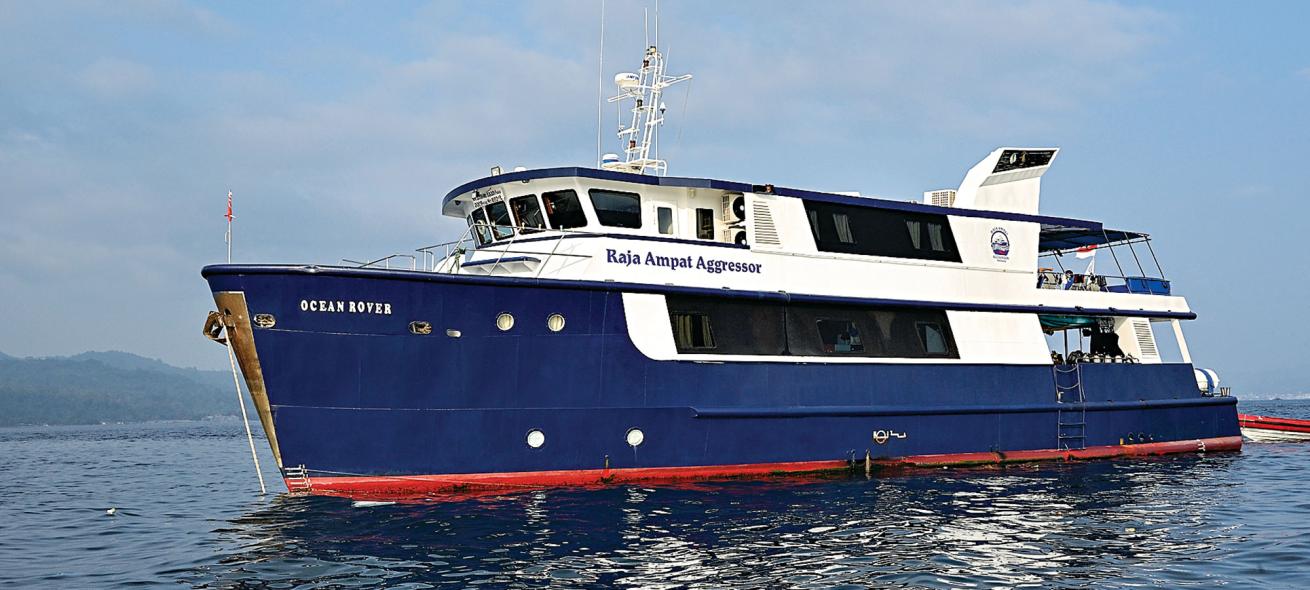
AggressorRaja Ampat Aggressor is 100 feet long with a 21-foot beam.
It’s day three of our Celebes Sea journey through Indonesia’s Derawan Islands, and everyone’s bucket-list animal encounter has been crossed off. We’re all eager for more, however, jokingly vowing to mutiny if cruise director Urik Comparini refuses to meet our demand. He averts the insurrection and kindly allows us to dive the site again. So after one incredible dive of nonstop whale-shark action, we grab a gourmet snack in the Raja Ampat Aggressor salon, and then suit up and head back into the water for another round of Rhincodon typus ballet.
Many of us agree we could have dived this site for the remainder of the charter and been perfectly happy. The graceful moves of these massive fish — reaching lengths of 30 feet and greater — are unlike any animal I’ve been in the presence of. Their calm demeanor puts you at ease as you observe their every move. I’ve snorkeled with whale sharks off Mexico’s Yucatan peninsula, but this was my first time scuba diving with the ocean’s biggest fish.
Other than the small bit of current we experienced, diving is unlike the typical snorkeling experience where you are trying to catch up to a whale shark on the move. Here in the Celebes, the whale sharks are attracted to the locals’ fishing platforms, so it is much easier for divers to stay put and let the whale sharks come to you.
That evening, one fellow American diver could not stop gushing about the experience. “Awesome!” she excitedly repeats again and again.
Her facial expressions reflect pure joy at dinner. Photographer Anuar Patjane, from Tehuacán, Mexico, pulls out a bottle of agave-infused mezcal that we share to make a celebratory toast. We crowd around him to look at the photos in his camera’s LCD display. His specialty is black-and-white photography, and his images lend a sense of majesty to the sharks, much like Ansel Adams’ sweeping landscape photographs of the American West.
It’s rare to see whale sharks in large groups, but in this area of Talisayan — about 20 minutes by speedboat from Derawan — there is a fairly large population. It’s comparable to the whale-shark aggregations in Indonesia’s famous Cenderawasih Bay, but here, fewer divers equals more quality time — and less disruptive interaction — with the sharks.
The Hits Keep Coming
^^A^^t this point in the trip, I’m pretty certain that the whale sharks will remain the highlight. But by the end of the week, the vote among guests is no longer unanimous. Although I still heavily favored an all whale-shark diving itinerary, the Aggressor crew introduced us to several incredible encounters. Like visiting the largest jellyfish lagoon in the world, according to Comparini. “Even larger than Jellyfish Lake, made famous in Palau,” he tells us. And fortunately for the jellyfish lagoon found in Kakaban, it is still very much full of jellyfish.
Being surrounded by thousands of jellyfish is surprisingly serene and eerily quiet. The sun rays break the surface of the water and silhouette the jellyfish blobs as they float past, making for incredible underwater-photo opportunities.
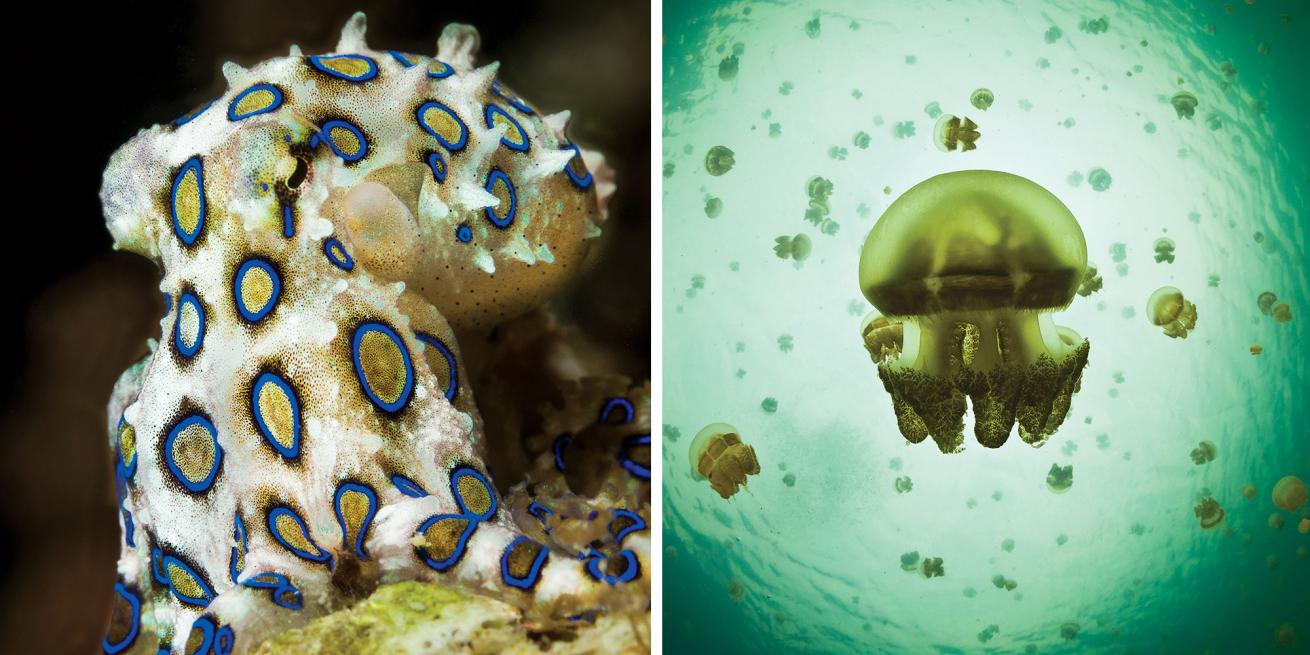
Alex TyrrellBlue-ringed octopuses (left) are among the colorful macro life found in the Derawan Islands. A stingless jellyfish drifts through a lagoon in Kakaban.
The fun doesn’t stop at the jellyfish lagoon: High-adrenaline junkies will find hundreds — maybe even thousands — of schooling barracuda at dive sites such as the Channel. This drift dive is in a shipping channel — hence its name — and features strong currents (it’s not recommended for beginners).
To hang with the ’cuda gathered in the channel, you hook into the reef; once you unhook, the current can take you on quite a ride.
Uncharted Waters
^^T^^he Derawan Islands lie farther north than the Raja Ampat region that this Aggressor vessel is named for, but, similar to Raja, you will find gorgeous shallow reefs mixed among the drift dives, whale sharks and jellyfish lagoon.
Since Raja Ampat Aggressor is the first Aggressor to operate in the area, there is still much to discover about the Derawan Islands. The archipelago is comprised of four islands: Sangalaki, Kakaban, Maratua and Derawan. At the time of my visit in July 2017, we were the second group of divers to ever dive this itinerary with Aggressor.
When I asked my fellow passengers what drew them to this destination, they almost overwhelmingly answered because it was “something new.” Father and son Serguei and Vladimir Kazantsev from Moscow picked Derawan over Palau or Cocos. “We heard this place has both macro and big animals like sharks,” says Kazantsev.
There is a certain thrill that goes along with being one of the first divers to embark on a journey through a remote area of the world.
If you prefer to dive more-iconic sites, stick to a Raja Ampat itinerary. But if you prefer to uncover the secrets of a lesser-known region, the Derawan Islands will offer them in both large and small ways.
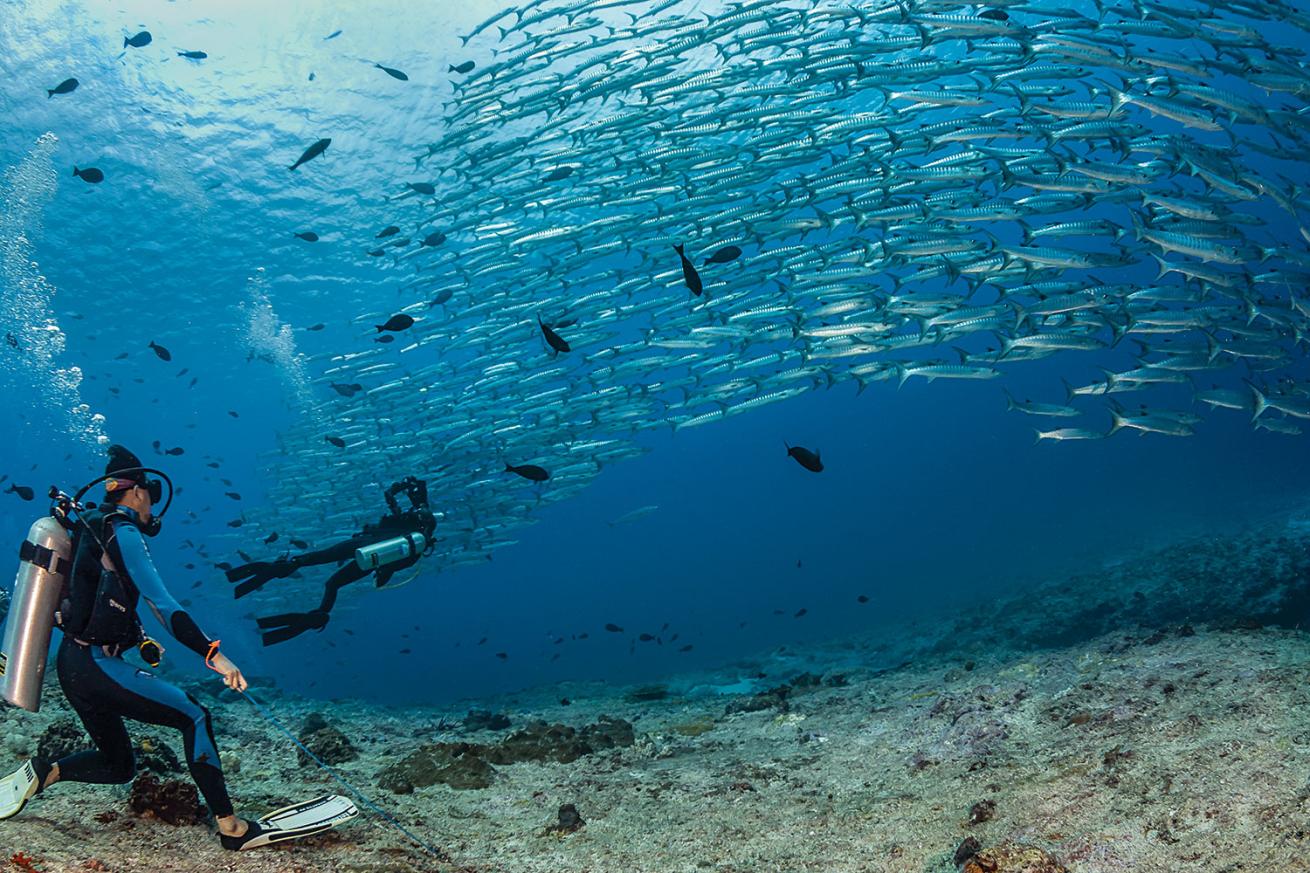
Alex TyrrellDivers watch schooling barracuda buzz by.
Need to Know
When to Go: Raja Ampat Aggressor sails the Derawan Islands only during the months of July and August. Trips are scheduled through 2020.
Travelers Tips: Make sure to let the domestic Indonesian air carriers know that you are traveling with scuba gear, and in most cases, they will waive the fee for overweight baggage.
Dive Conditions: As in most of the Indo-Pacific, you can expect warm water temperatures with an average of about 82 degrees F year-round. Overall there is good visibility and mild currents, although some sites like the Channel near Maratua can see very strong currents.
Operator: Raja Ampat Aggressor has been operating as part of the Aggressor Fleet since 2015, but its Derawan Islands itinerary is new as of June 2017.
Getting There: Since Raja Ampat Aggressor departs from the small Indonesian town of Tarakan, odds are you will not be able to get a direct flight unless you are traveling from somewhere within Indonesia. Popular stopover routes for travelers from the United States and Europe take you through Bali, Jakarta or Singapore, and onward on a separate Indonesian carrier to get you to and from Tarakan. Aggressor’s in-house travel experts can also assist with your travel plans.
Price Tag: A twin cabin starts at $3,010 for a seven-day cruise, and a master cabin with queen bed will run you $3,325 for the week.

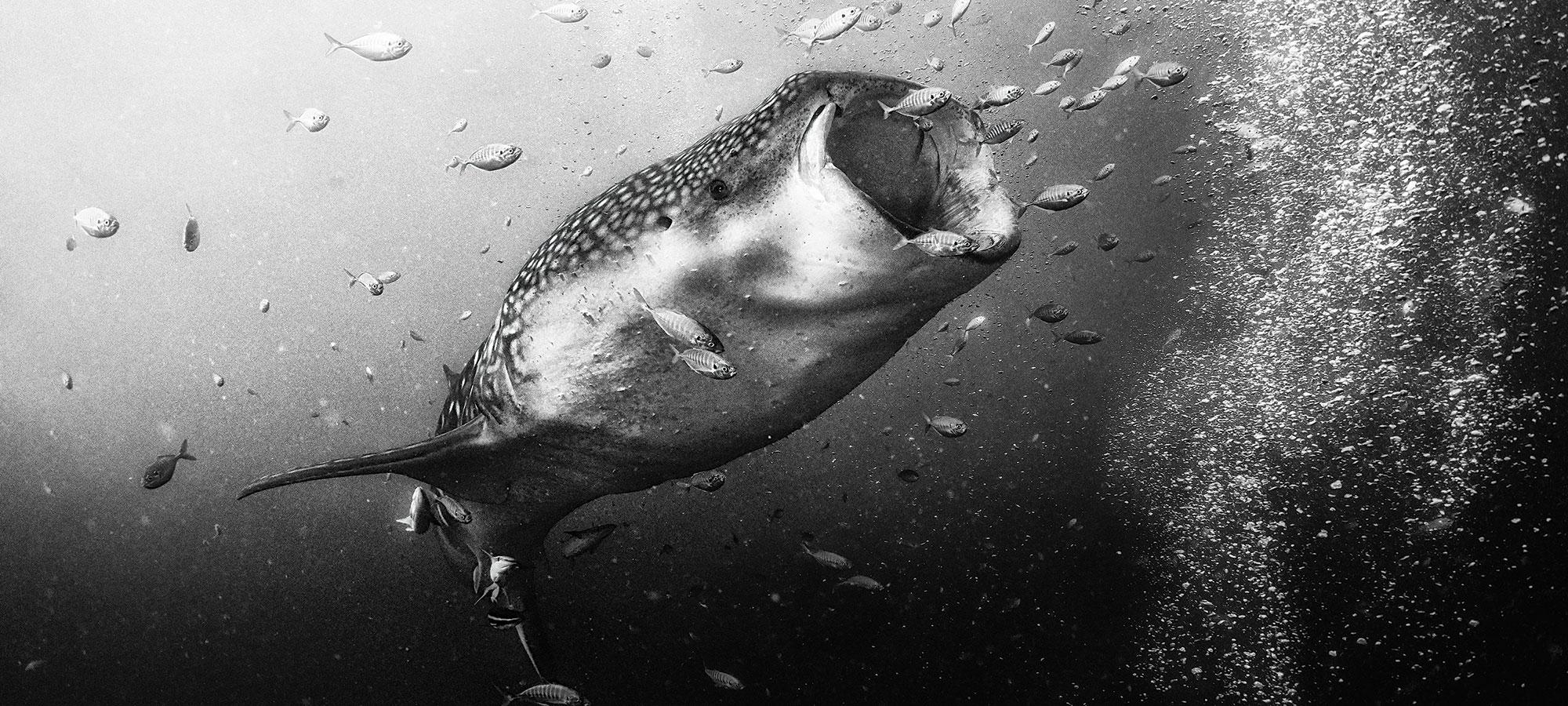


.png?itok=wW_XQefZ)
.jpg?itok=GejcevO2)


